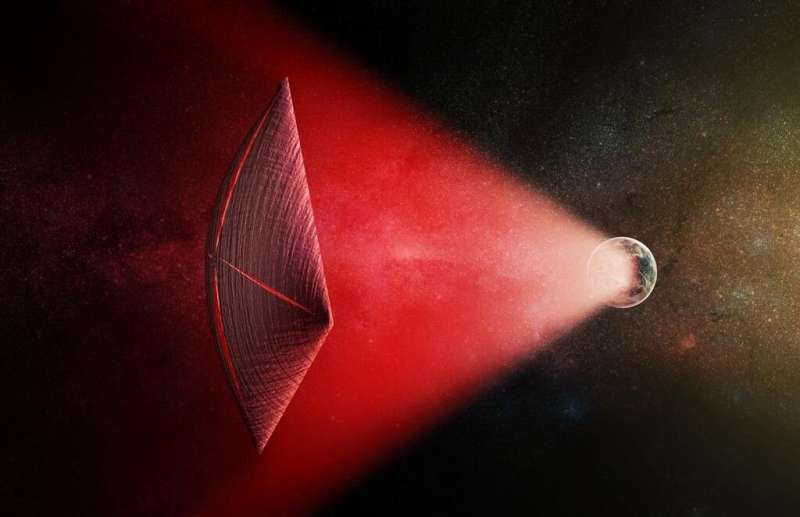What's the best way to sail from world to world? Electric sails or solar sails?

In the past decade, thousands of planets have been discovered beyond our solar system. This has had the effect of renewing interest in space exploration, which includes the possibility of sending spacecraft to explore exoplanets. Given the challenges involved, a number of advanced concepts are currently being explored, like the time-honored concept of a light sail (as exemplified by Breakthrough Starshot and similar proposals).
However, in more recent years, scientists have proposed a potentially more effective concept known as the electric sail composed of wire mesh that generates electrical charges to deflect solar wind particles, thus generating momentum. In a recent study, two Harvard scientists compared and contrasted these methods to determine which would be more advantageous for different types of missions.
The study, which recently appeared online and is being reviewed for publication by Acta Astronautica, was conducted by Manasavi Lingam and Abraham Loeb—an assistant professor at the Florida Institute of Technology (FIT) and the Frank B. Baird Jr. Professor of Science at Harvard University and the Director of the Institute for Theory and Computation (ITC), respectively.
The concept of a light sail is old, involving a spacecraft equipped with a large sheet of reflective material that uses the radiation pressure of a star (stellar wind) to accelerate over time. A major advantage of this technology is that it does not require a spacecraft to transport its own fuel supply, which typically accounts for the majority of a spacecraft's mass.
This is especially important when it comes to interstellar travel, since the amount of reaction mass needed to reach even a fraction of the speed of light (c) would be tremendous. And unlike concepts such as antimatter propulsion or concepts that rely on physics that are still untested (or even hypothetical), solar/light sails use technology and physics that are entirely proven at this point.
Another advantage is the fact that a light sail can be accelerated using means other than solar radiation. As Lingam explained to Universe Today via email: "Light sails can be 'pushed' by either laser arrays or solar/stellar radiation. In either case, the main advantage of light sails is that one does not need to carry the fuel onboard, unlike chemical rockets. This greatly reduces the mass of the spacecraft since the majority of mass in chemical rockets is due to the fuel. The same advantage also applies to electric sails."
However, in recent years, variations on this concept have been developed, like the magnetic sail ("magsails") proposed by Robert Zubrin and Dana Andrews in 1988, and the electric sail proposed by Pekka Janhunen in 2006. In the case of the former, a superconducting loop would generate an electrical field while the latter would generate a magnetic field via a sail of small wires—both of which would repel solar wind.
These concepts have some notable differences from conventional solar or light sails. As Lingam explained: "Electric sails rely on the transfer of momentum from the charged solar/stellar wind particles (protons in our example) by deflecting them via electric fields, whereas light sails rely on momentum transfer from photons emitted by the star. Thus, the wind of the star drives electric sails, whereas electromagnetic radiation emitted by the star drives light sails."

Interestingly enough, magnetic sails have been considered by some researchers as a possible means of slowing a light sail down as it nears its destination. One such researcher is Professor Claudius Gros of the Institute for Theoretical Physics, Goethe University, Frankfurt, and Andreas Hein and Kelvin F. Long—the principal investigators of Project Dragonfly, a concept similar to Breakthrough Starshot.
All three concepts are capable of converting the radiation emitted by stars into momentum, but also come with their share of disadvantages. For starters, electric sails are very much dependent on the properties of their host stars. Light sails, on the other hand, are rendered largely ineffective when it comes to M-type (red dwarf) stars because the radiation pressure is not high enough to generate enough velocity to escape a star system.
This is a rather limiting issue, as low-mass, ultracool M-type dwarfs account for the vast majority of stars in the universe—accounting for 75 percent of the stars in the Milky Way. Red dwarfs also are incredibly long-lived compared to other classes of stars and can remain in their main sequence for up to 10 trillion years. Therefore, a propulsion system that can use red dwarf systems would be preferable over longer timescales.
Because of these considerations, Lingam and Loeb sought to determine which method of interstellar travel would be preferable (light sails or electronic sails) in relation to different classes of stars—F-type (white), G-type (yellow), K-type (orange), and M-type stars. After taking into account the radiation properties of each class, they factored in the likely mass of the spacecraft—based on the parameters established by Breakthrough Starshot.
What they found was that a spacecraft paired with an electric sail represents a better means of propulsion in proximity to most types of star, and not just for gram-scale spacecraft. However, Lingam and Loeb's calculations also found that it would take considerably longer for an electric sail spacecraft to reach the kinds of speeds that would make interstellar travel practical.

"Instead, if one considers light sails powered by laser arrays (such as Breakthrough Starshot), it is then possible to directly achieve relativistic speeds (e.g., 10 percent the speed of light) via light sails; in contrast, electric sails powered by stellar winds achieve speeds of merely 0.1 percent the speed of light," said Lingam.
While an electric sail could achieve 0.1 c eventually from repeatedly achieving close proximity with stars, they estimated that this would take 10,000 encounters over the course of 1 million years. Lingam says, "[E]lectric sails represent a viable means of undertaking interstellar travel. However, any technological species wishing to use this method would have to be long-lived, since this whole process of achieving relativistic speeds would require approximately 1 million years. If such long-lived species do exist, electric sails represent a fairly convenient and energy-efficient means of exploring the Milky Way over long timescales (millions of years)."
While 1 million years is little more than a blink of an eye in cosmic terms, it is incredibly long in terms of the lifespan of civilizations—at least by our standards. As a species, humanity has existed for about 200,000 years and has only been recording its history for about 6000. More to the point, we have only been a space-faring civilization for the last 60 years.
Ergo, a sail that is capable of being accelerated by lasers remains the most practical means of exploring exoplanets in our lifetimes. Another implication for this study is that it could inform the search for extraterrestrial intelligence (SETI). When searching the universe for signs of technological activity (technosignatures), scientists are forced to look for signs that they will recognize.

Given the benefits of an electric sail, it is possible than an extraterrestrial civilization might favor this technology over similar ones. As Prof. Loeb explained to Universe Today via email: "Our calculations imply that advanced civilizations are likely to favor the use of electric sails over light sails for propulsion that is based on the natural output of stars in the form of wind or radiation. However, if a technological civilization wishes to achieve speeds or launch large cargoes which cannot be propelled by the power produced by their host star, then it is likely to favor light sails, which are pushed by their artificially produced light beam such as a powerful laser. The situation is similar to the difference between sail boats, which use the wind provided for free by mother nature, compared to bigger or faster boats that are propelled by artificial means such as an engine."
Unfortunately, as Loeb added, electric sails are not easily detectable at great distances because they are made up of electrified wire meshes and do not emit any obvious technosignatures. "Therefore," he concludes, "SETI should primarily focus on the search for light sails, which are visible due to leakage of their light beams beyond the boundaries of the sail near their launch sites or because they reflect sunlight when they pass close to the sun, just like asteroids or comets of a similar size."
However, Lingam and Loeb also emphasize that electric sails could be an attractive option for an extra-terrestrial civilization for precisely the same reason. In addition to being energy-efficient, electric sails are not subject to spillover and can therefore travel from one star system to another without being noticed. A possible resolution to the Fermi Paradox? Perhaps!
In any case, this study does indicate that our current plans to explore neighboring star systems should focus on concepts that emphasize speed over longevity. This does not mean that deploying electric or magnetic sails that could continue exploring the universe for eons is a bad idea, but a mission that can arrive in another star system in our lifetimes seems like the preferable option for now.
More information: Electric sails are potentially more effective than light sails near most stars: arxiv.org/pdf/1911.02765.pdf
Journal information: Acta Astronautica
Source Universe Today



















